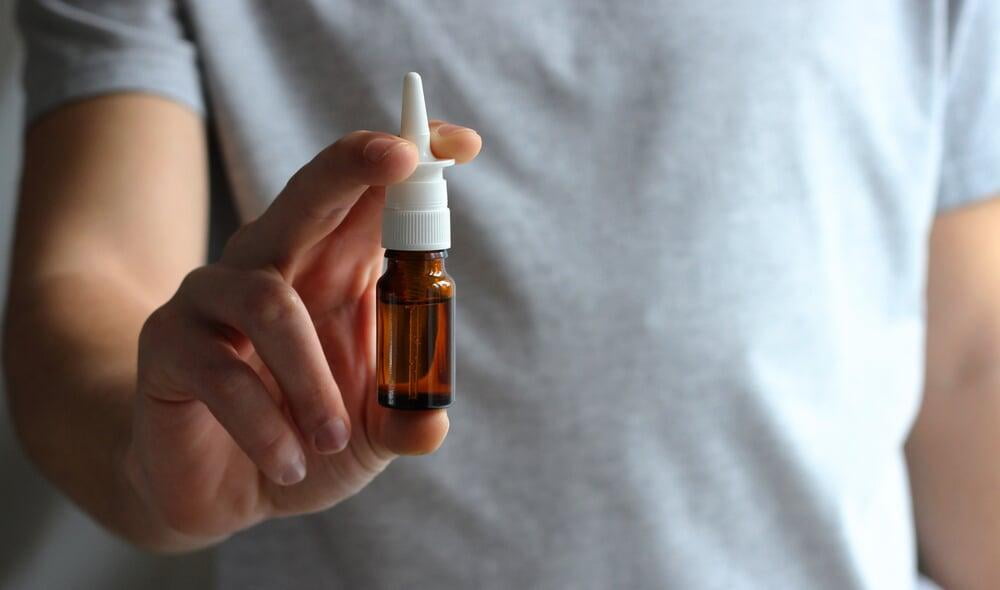Research Feature:
Nasal Spray Provides a Better Avenue for Treatment Using Antipsychotics
Author: Nikki Pangborn
Antipsychotics are prescribed medications used to treat various mental health disorders such as schizophrenia, bipolar disorder, and depression (CAMH, n.d.; Hemsworth, 2021). Researchers believe that psychotic disorders are at least in part a consequence of excess dopamine release in the brain, and antipsychotics function by blocking that activity (CAMH, n.d.). Antipsychotics can effectively mitigate symptoms of psychosis and depression, especially when used in combination with antidepressants in the case of the latter.

Oral administration is one of the most common ways that antipsychotics are taken, primarily because it is inexpensive and accessible (Pandley et al., 2022). However, ingesting antipsychotics orally can induce many uncomfortable side effects for patients, such as weight gain, agitation, movement problems, and/or sexual dysfunction (CAMH, n.d.; Hemsworth, 2021; Pandley et al., 2022). Adverse effects can arise because patients can require much higher dosages when consumed orally (because the medication must pass through the entire body before it can infiltrate the blood-brain barrier (BBB) (Pandley et al., 2022).

Current research aims to overcome these barriers through the development of antipsychotic nasal sprays. Through intranasal administration, medication can more easily circumvent the BBB through the nose’s mucosal layer and the olfactory nerve (Pandley et al., 2022; Hemsworth, 2021). This route also avoids absorption from the whole body and can reduce potential side effects.
As this technology is still in its early stages, current research findings examining the efficacy of intranasal administration are mixed. For example, one clinical trial found no significant treatment benefit for patients with schizophrenia receiving intranasal dosages of oxytocin (Cacciotti-Saija et al., 2015). Conversely, research completed by Daly et al. (2019) found a significant delay in the relapse of depressive symptoms in individuals with treatment-resistant depression who received intranasal dosages of Esketamine with oral antidepressants. Although neither study specifically measured the effects of antipsychotics, Kumbhar et al. (2021) found that intranasal delivery of the antipsychotic Aripiprazole increased its target accuracy by 96.9% and enhanced its bioavailability.
In addition to these inconclusive findings other potential challenges exist. For example, antipsychotics might require direct access to particular brain regions to have a therapeutic effect, which can be difficult to achieve (Pandley et al., 2022). Furthermore, there are several barriers in the nasal cavity that can obstruct their effects, such as protective enzymes and musociliary clearance. Thus, future research must investigate avenues that can overcome these limitations and barriers.
Currently, our own McMaster community is involved in the development and improvement of nasal spray administration of antipsychotics. McMaster professors Ram Mishra from the Department of Psychiatry and Behavioural Neurosciences and Todd Hoare from Chemical Engineering have collaborated to better the functionality of nasal spray through the use of cornstarch nanoparticles (Hemsworth, 2021). These allow for more effective binding of the medication within the nasal cavity, avoiding the rapid clearance typical in intranasal administration, and allows effects to last for up to three days in patients with schizophrenia (Hemsworth, 2021). Their work is described in more detail in their published article here.
Although more research is necessary to understand the scope of how intranasal administration of antipsychotics can effectively operate, current research provides compelling evidence for their treatment potential. As this technology continuously improves, individuals seeking help for various mental health problems can look forward to even more safe and effective options for treatment.